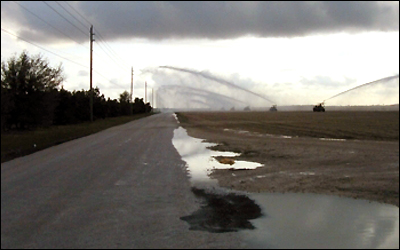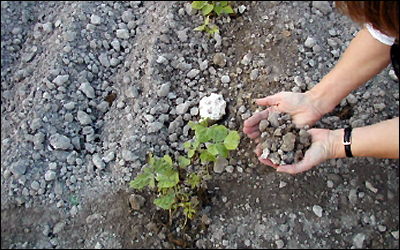Water Conservation Techniques to Optimize Water Use by Agricultural Crops Grown in Krome Very Gravelly Loam ("Rock-Plowed") Soils
As human pressure increases (Miami-Dade is one of the top growing areas in the country) water is becoming a more scarce resource. There have been water shortages in recent years. In spite of this, the high yields of the Biscayne shallow aquifer give the general perception that water is not a limiting factor (in fact and endless one!).
Optimized irrigation (to closely match crop needs) avoids the potential for excess soil water drainage and leaching of agri-chemicals in the soil in this environmentally sensitive area. In fact recent work at UF-TREC by other researchers shows that crop yields can be increased while reducing irrigation amounts.

Quantifying soil water content in irrigation is crucial for maximizing crop water use efficiency in So. Florida. The rock-plowed soils of Miami-Dade County agricultural area challenging since their very coarse nature can pose soil contact problems for some of the available soil moisture devices.

Several programs are under was to develop advanced irrigation techniques that insure or increase crop yields while minimizing environmental impacts in this sensitive area next to the Everglades National Park:
- Testing of soil moisture monitoring devices for irrigation management in different crop commodities and soils.
- Demonstration project to assess the feasibility of automatic irrigation based on soil moisture sensoring in a commercial tomato field (click here for more details[488KB]).
- Optimized irrigation (to closely match crop needs) avoids the potential for excess soil water drainage and leaching of agri-chemicals in the soil in this environmentally sensitive area.
- A comprehensive survey to ~500 commercial agriculture water users (ornamentals, vegetables, fruits and golf/landscape) was conducted to identify historical improvements, current practices, motivations and possible introduction of additional water conservation techniques.

This page was last updated on July 13, 2019.